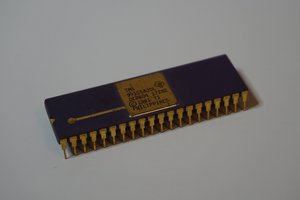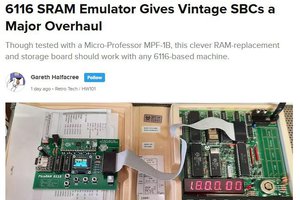This project is currently under heavy development so a lot of the limited documentation us likely to be out of date regularly.
Small change of plans with the external SRAM (as7c34096a-10tin) although the initial result are very encouraging I have now removed the shift registers from the design and am now directly addressing the memory from the Teensy, This change although not terribly elegant does solve some headaches that would otherwise be preventing me from moving the project forward at the speed I would like. To help solidify these changes and allow to to have a reliable hardware platform with which to continue the firmware development I have now laid out the first full hardware revision which not only includes the changes to the SRAM addressing but also adds sound, user buttons, and screen brightness control. As usual the Eagle files for the first revision PCB can be found along with the most up-to-date version of the firmware at the GitHub repository linked below.
Current Emulation Speed: 1 - 5.5 frame per second
Do To's:
- Finish sound implementation.
- Serious optimization and code cleanup.
- Gameboy colour compatibility.
- Cartridge connector to play real games?
- Functionality to rip ROM's to SD card?
- Proper hardware explanation and documentation.
GitHub Repository:
https://github.com/ChrisM90/TeensyBoy
For the extremely patient among you here is a video.
 ChaosChris
ChaosChris


 Erik Piehl
Erik Piehl
 Foxchild
Foxchild
 Michael Wessel
Michael Wessel
Sir does your LCD support 8-bit or 16-bit parallel interface? If so what about using the parallel interface of the LCD to speed things up a bit and adding a Teensy 3.2 or Teensy 3.6 as a coprocessor or some sort of "graphics processor" to free up some resources at the main Teensy 3.6? Thanks for this project anyway I will try this after my finals in college as to see if it works well.